OK folks – Hit the arrow just below and let’s get started.
We got us some work to do…
I picked up three IBC containers recently, two of which are going into an aquaponics setup.
The third one is going to help me with a drip system for the fruit trees and vegetables, and at 1000 litres will come in very handy.
Until now I’ve relied on the 220 litre ex olive drums, and they are good to a point, but there is just not enough water in there to keep the soil hydrated during the hotter months, and that was impacting on the quantity of food available from my garden.
So how does one install an IBC? Well as I’ve just discovered, it takes a bit of work to prepare the foundations for a 1000 litre rainwater tank.
Remove the top brackets and slide the tank out of the cage. Careful now – that plastic is not the strongest, and the cage can be sharp at points!
Now unbolt the metal cage from the pallet. Oh and don’t lose the bolts.
A tonne of water needs a firm and secure place to sit, and if you are relying on a gravity feed setup and want half decent water pressure then it should be well up off the ground.
The bigger pile is crushed concrete. The second pile is rough sand. Together they will form the foundation.
A lovely spot to place an IBC, with plenty of rainwater coming off the shed.
Redwood sleepers for the base, levelled off straight with sand. Now it is time to fill it up with the concrete. I also found a couple of bags of old cement under the house, and smashed them up with the rest of it.
Ok now it is time to pack it all in. Compressing rock and sand with a small head sledge hammer is a tough job, maybe the hardest of all. I needed to drop that hammer about 200 times, then fill it more, then another 100 times.
What you end up with is a very solid and stable fill – as you can see it was impossible to drive the shovel more than an inch into it.
Over that I placed heavy concrete slabs, with each one weighing about 50 kilos.
The pallet goes over that and again it is levelled off, with a very slight decline to the side where the IBC water outlet will be.
I then filled in the base of the pallet with more concrete and sand, then bolted the cage back into place, and then in went the plastic tank.
Now it is just a case of getting the downpipes into the top, and connecting the drip system from the water outlet. This might be the most well built thing I have ever done, and am very proud of the end result. I hope my plants are too!
An IBC is susceptible to UV radiation, which is why you can see that poor attempt to paint this one. What I’m going to do now is grow it over with a passionfruit, using the steel cage as a trellis, and before too long the whole thing will be covered.
And here that is…
And what of the gravel and sand left over? Well that is a whole different adventure 😉
Will keep posting photos as my little rain harvest project develops. Right now I need to take a break from all this hard work!
+Shane Genziuk
Related articles
- These butts are made for watering (greenreview.blogspot.com)
- Rainwater collection (everydayredflags.wordpress.com)
- 4 Clever Ways To Use Harvested Rainwater (bayintegratedmarketing.wordpress.com)
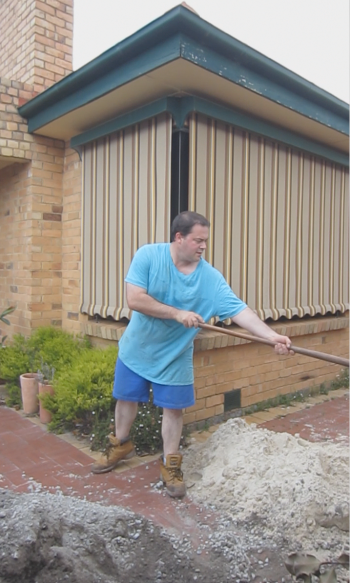
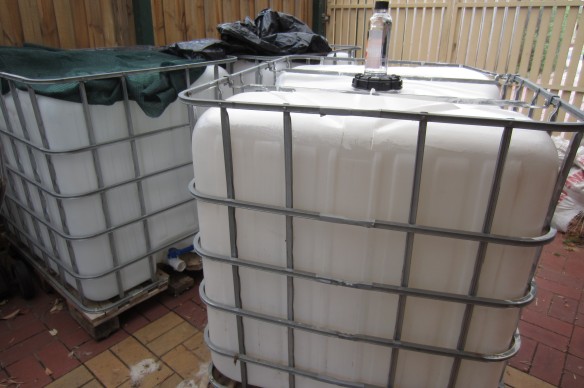
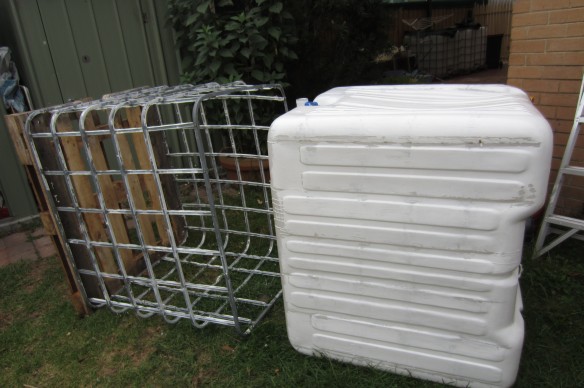
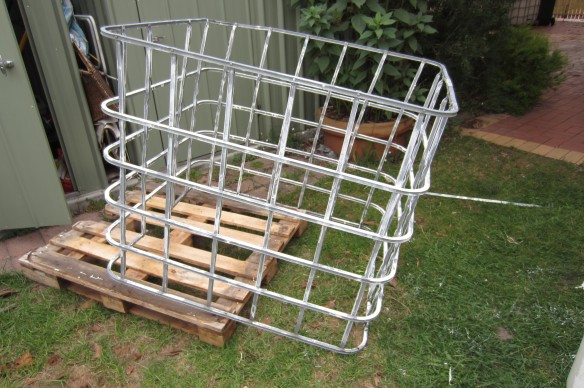
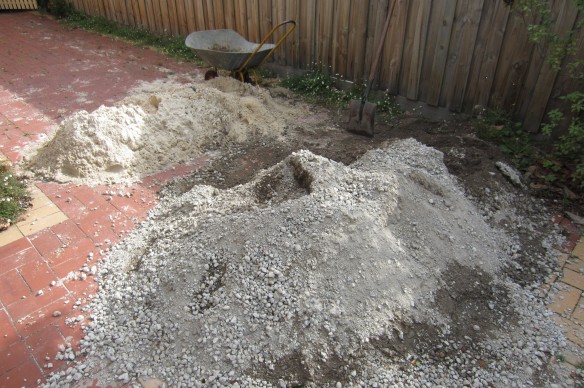
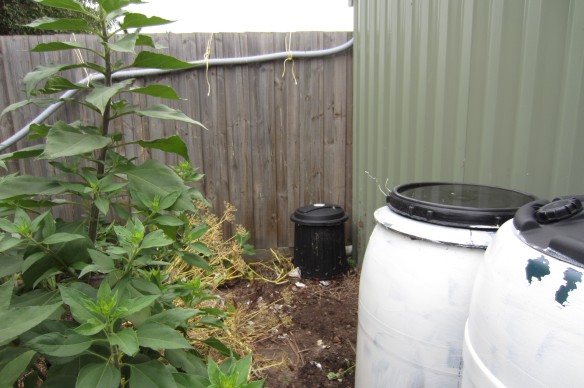
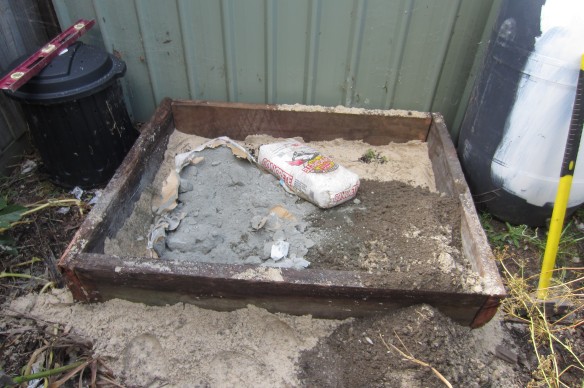
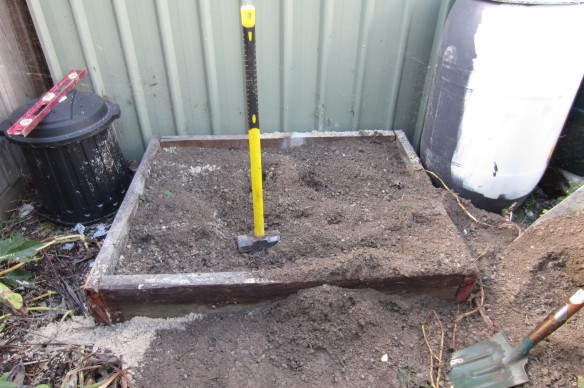
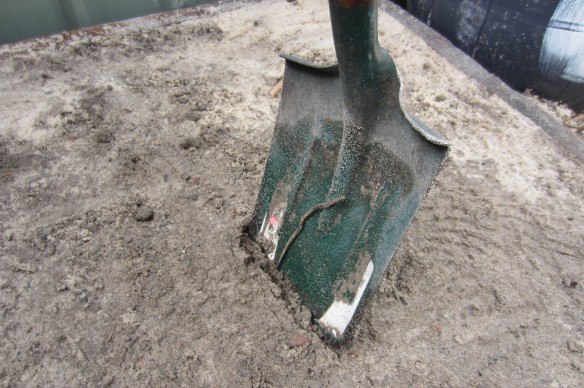
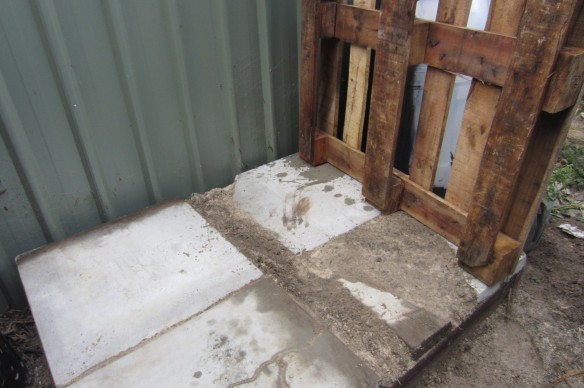

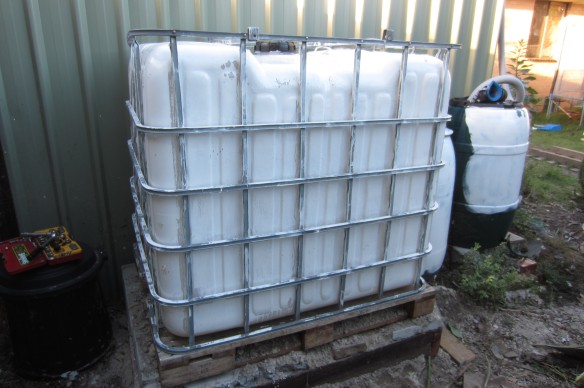
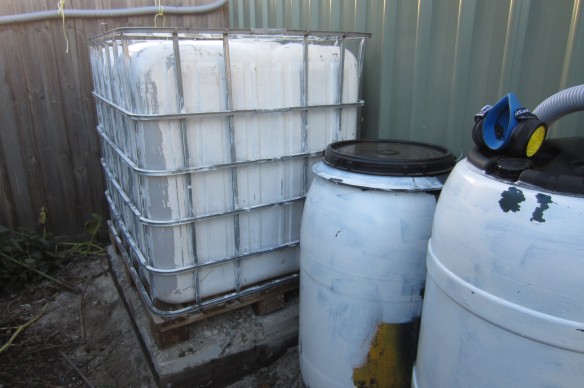
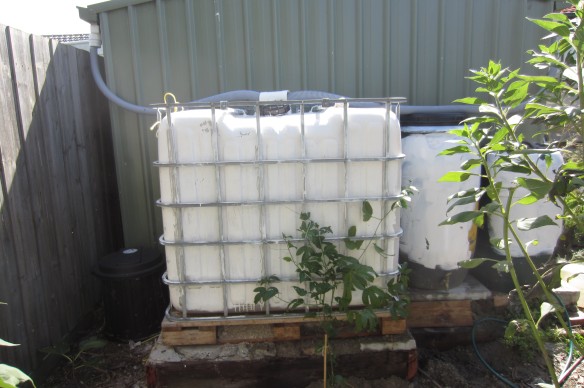


Loved reading this thannk you
LikeLike
Pingback: The End of Summer 2013 | Ground to Ground
We are having trouble locating the IBC containers at a reasonable price. Would you mind telling us where you bought yours? Good site with good info thank you.
Bill
LikeLike
Hi Bill – I found them in a local trading paper but it wasn’t from someone that sells them regularly. If you google ‘IBC for sale’ you might find the guys that pick them up from factories then clean them out for sale.
LikeLike
Pingback: Water Rat | Coffee Grounds to Ground
Yeah nice. Have 4 of these all hooked up harvesting water off the roof. Get fish in them to eat mosquito eggs otherwise cover out of the sun otherwise they crack eventually. Later.
LikeLike
Right, I’ve tracked down a rerecenfe which makes it clear that the pumping costs are the most significant part of the carbon impacts of RWH. the environmental impacts of RWH systems are higher than mains. This has been explored in a number of studies (Crettaz et al. 1999, Hallman et al. 2003, Thornton 2008). Whilst it is possible to criticise the assumptions made within all of these studies, at a simple level, the energy cost of pumping alone is higher than the total impact of the equivalent volume of mains water (pumping costs for RWH range from 1-3kWh/m3, total energy cost for mains water 0.56kWh/m3, from WaterUK 2008). This quote is from page 51 of Quantifying the energy and carbon effects of water saving: full technical report (Alan Clarke, Nick Grant & Judith Thornton, for EST, 2009).So if pumping energy can come down to below 1kWh/m3 and the embodied energy is ignored (or reduced through using reclaimed materials for storage tanks, etc) then RWH may start to be more attractive.
LikeLike
had one of these for years for water. how much did you pay for yours? I want to get into the aquaponics as well and these are the best option. People should do a search for aquaponics and IBC on youtube to see a video showing how easy it is to set up.
LikeLike
I bought 3 for $75 each but had to pick it up myself, so hiring the trailer, 2 trips, and 4 hours of driving, fuel, ETC. Maybe $125 each all up.
I’ve got my aquaponics setup working lovely now, and am getting the poly greenhouse today! Come over mate and check it out!!
LikeLike